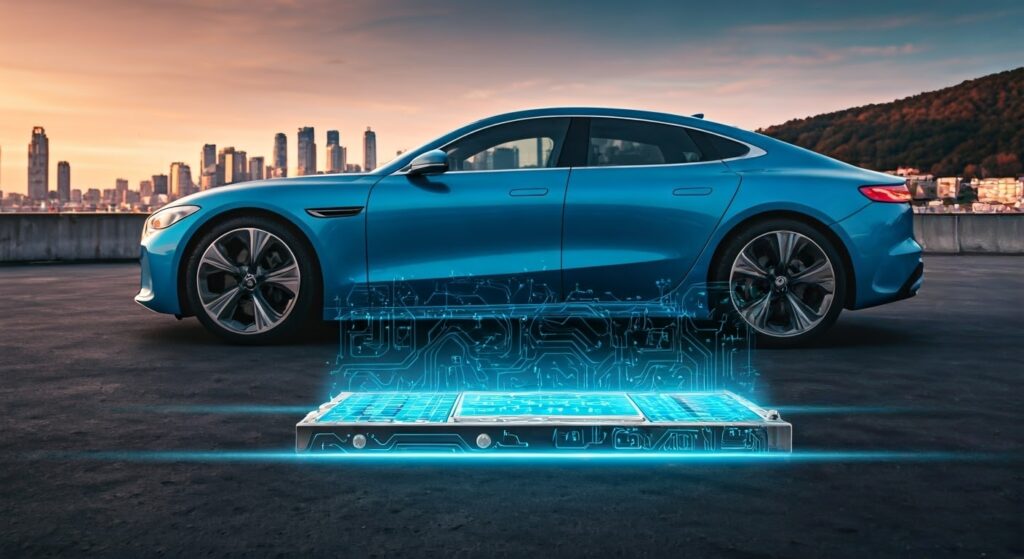Introduction
The global energy landscape is on the brink of a seismic shift as solid-state batteries (SSBs) transition from lab prototypes to commercial reality. By 2025, these next-generation power sources are set to revolutionize electric vehicles (EVs), consumer electronics, and renewable energy storage—offering higher energy density, faster charging, and improved safety over traditional lithium-ion batteries.
This 3,500-word guide explores:
✔ How solid-state batteries work (and why they’re superior)
✔ Key players racing to dominate the 2025 market
✔ Real-world applications transforming industries
✔ Challenges and future outlook
1. The Solid-State Battery: A Technological Leap
A. How SSBs Differ from Lithium-Ion
| Feature | Lithium-Ion | Solid-State Battery |
|---|---|---|
| Electrolyte | Liquid/Polymer Gel | Solid Ceramic/Sulfide |
| Energy Density | 250-300 Wh/kg | 500+ Wh/kg (2025 target) |
| Charging Speed | 30-40 mins (80%) | <15 mins (2025 goal) |
| Safety Risks | Flammable electrolyte | Non-flammable |
B. The Science Behind the Breakthrough
SSBs replace liquid electrolytes with solid conductive materials (e.g., lithium garnet or sulfide glass), enabling:
- Dendrite suppression (preventing short circuits)
- Wider temperature tolerance (-30°C to 100°C)
- Longer lifespan (2-3x cycle life vs. lithium-ion)
2. The 2025 Solid-State Battery Race: Key Players
A. Automakers Betting Big
- Toyota: Plans to launch SSB EVs by 2025-2027 (1,000 km range target).
- BMW: Partnering with Solid Power for high-voltage SSBs by 2025.
- Nissan: Promises mass production by 2028 with 3x energy density.
B. Battery Tech Innovators
- QuantumScape (U.S.): Volkswagen-backed, targeting 800+ Wh/kg by 2025.
- SES AI (Singapore): Hybrid lithium-metal SSBs for aviation.
- CATL (China): Developing semi-solid-state batteries as interim solution.
3. 2025 Applications: Where SSBs Will Shine
A. Electric Vehicles
- 1,000 km ranges on single charge (Tesla’s 4680 cells: ~520 km).
- Ultra-fast charging matching gas station fill-ups.
B. Consumer Electronics
- Smartphones: Week-long battery life (vs. 1-2 days currently).
- Laptops/Drones: 50% lighter with same capacity.
C. Grid Storage
- Renewable energy buffers with 20-year lifespans.
4. Challenges to Overcome
A. Production Hurdles
- Cost: SSBs currently 5-8x pricier than lithium-ion.
- Scalability: Oxide-based electrolytes are brittle; sulfide alternatives are moisture-sensitive.
B. Material Science Bottlenecks
- Lithium metal anodes prone to degradation.
- Supply chain gaps for rare materials (e.g., lanthanum, germanium).
5. The Road to 2030: What’s Next?
A. Short-Term (2025)
- Limited luxury EV adoption (e.g., Mercedes EQXX).
- Giga-factories scaling up (Toyota’s $13B battery investment).
B. Long-Term (2030+)
- Cost parity with lithium-ion.
- Solid-state “battery-as-a-service” models.
Conclusion
Solid-state batteries represent the next evolutionary leap in energy storage, with 2025 marking the inflection point for commercialization. While challenges remain, the potential to decarbonize transport, stabilize grids, and redefine device portability makes SSBs a cornerstone of the clean energy transition.
Key Takeaways:
- Prioritize SSB stocks/partnerships (Toyota, QuantumScape).
- Monitor government incentives (U.S. DOE’s $200M SSB fund).
- Prepare for supply chain shifts (lithium vs. sulfide material demand).

